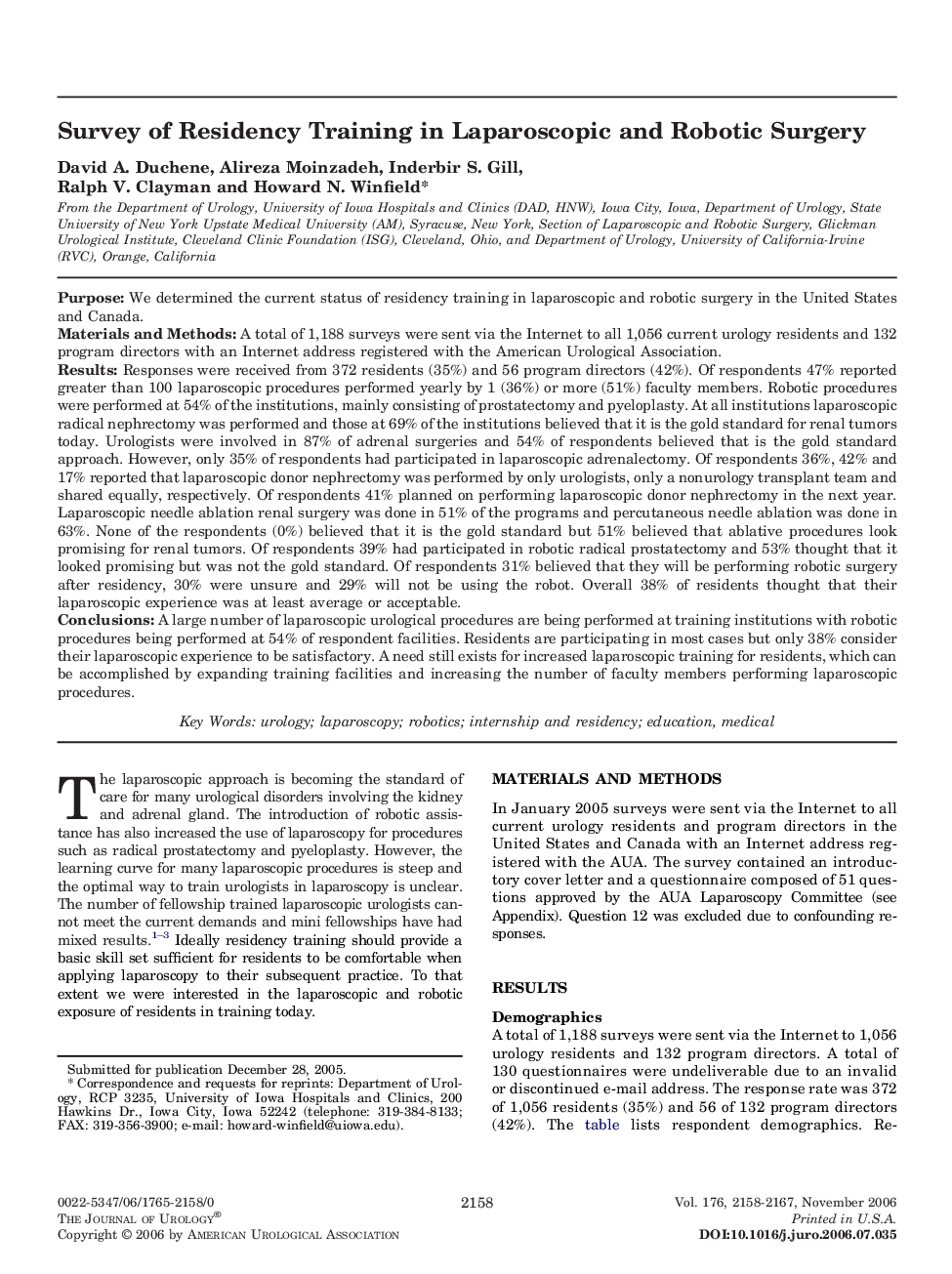| کد مقاله | کد نشریه | سال انتشار | مقاله انگلیسی | نسخه تمام متن |
|---|---|---|---|---|
| 3876030 | 1599017 | 2006 | 10 صفحه PDF | دانلود رایگان |

PurposeWe determined the current status of residency training in laparoscopic and robotic surgery in the United States and Canada.Materials and MethodsA total of 1,188 surveys were sent via the Internet to all 1,056 current urology residents and 132 program directors with an Internet address registered with the American Urological Association.ResultsResponses were received from 372 residents (35%) and 56 program directors (42%). Of respondents 47% reported greater than 100 laparoscopic procedures performed yearly by 1 (36%) or more (51%) faculty members. Robotic procedures were performed at 54% of the institutions, mainly consisting of prostatectomy and pyeloplasty. At all institutions laparoscopic radical nephrectomy was performed and those at 69% of the institutions believed that it is the gold standard for renal tumors today. Urologists were involved in 87% of adrenal surgeries and 54% of respondents believed that is the gold standard approach. However, only 35% of respondents had participated in laparoscopic adrenalectomy. Of respondents 36%, 42% and 17% reported that laparoscopic donor nephrectomy was performed by only urologists, only a nonurology transplant team and shared equally, respectively. Of respondents 41% planned on performing laparoscopic donor nephrectomy in the next year. Laparoscopic needle ablation renal surgery was done in 51% of the programs and percutaneous needle ablation was done in 63%. None of the respondents (0%) believed that it is the gold standard but 51% believed that ablative procedures look promising for renal tumors. Of respondents 39% had participated in robotic radical prostatectomy and 53% thought that it looked promising but was not the gold standard. Of respondents 31% believed that they will be performing robotic surgery after residency, 30% were unsure and 29% will not be using the robot. Overall 38% of residents thought that their laparoscopic experience was at least average or acceptable.ConclusionsA large number of laparoscopic urological procedures are being performed at training institutions with robotic procedures being performed at 54% of respondent facilities. Residents are participating in most cases but only 38% consider their laparoscopic experience to be satisfactory. A need still exists for increased laparoscopic training for residents, which can be accomplished by expanding training facilities and increasing the number of faculty members performing laparoscopic procedures.
Journal: The Journal of Urology - Volume 176, Issue 5, November 2006, Pages 2158–2167